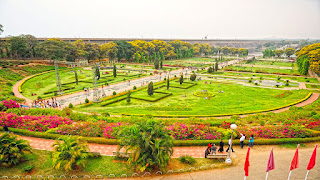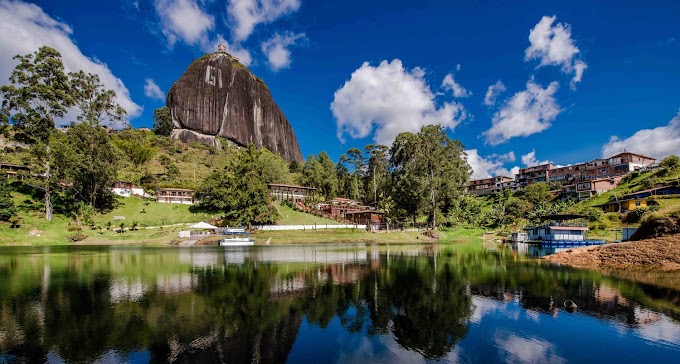
Sir Mokshagundam Visvesvaraya - Engineer
History :
Sir Mokshagundam Visvesvaraya more commonly known as Sir MV (15 September 1860 – 14 April 1962), was an Indian civil engineer and statesman and He received India's highest honour, the Bharat Ratna, in 1955.
Born: 15 September 1860, Muddenahalli is a village in Chikballapur District of Karnataka State.
Died: 12 April 1962, Bengaluru
Education: College Of Engineering Pune (1883), Central College Bangalore (1881), more
Awards: Bharat Ratna
Parents: Mokshagundam Srinivasa Shastry, Venkatalakshmamma
His birthday 15 September, is celebrated as Engineer's Day in India, Sri Lanka, and Tanzania in his memory.
He was the Chief Engineer of Krishna Raja Sagara dam in the north-west suburb of Mysuru city, and also served as one of the Chief Engineers of the flood protection system for the city of Hyderabad.
Visvesvaraya took a job as an assistant engineer with the Public Works Department of Bombay and later was invited to join the Indian Irrigation Commission.
He implemented an intricate system of irrigation in the Deccan Plateau and designed and patented a system of automatic weir water floodgates that were first installed in 1903 at Khadakvasla Reservoir near Pune.
These gates raised the storage level in the reservoir to the highest level likely to be attained without causing damage to the dam. Based on the success of these gates, the same system was installed at Tigra Dam in Gwalior and Krishna Raja Sagara (KRS) Dam in Mandya/Mysore, Karnataka.





In 1906–1907, the Government of India sent him to Aden to study water supply and drainage systems. The project prepared by him was implemented in Aden successfully. Visvesvaraya achieved celebrity status when he designed a flood protection system for the city of Hyderabad.
He was instrumental in developing a system to protect the Visakhapatnam port from sea erosion. This dam created the biggest reservoir in Asia when it was built Visvesvaraya gave his technical advice for the location of Mokama Bridge over Ganga in Bihar. At the time, he was over 90 years old, and was called the "Father of Modern Mysore State".
Visvesvaraya Career timeline :
- Assistant Engineer in Bombay, 1885; served in Nasik, Khandesh (mainly in Dhule), and Pune.
- Services lent to Municipality of Sukkur, Sind, 1894; designed and carried out waterworks for the municipality.
- Executive Engineer, Surat, 1896.
- Assistant Superintending Engineer, Pune,1897–1899; visited China and Japan, 1898.
- Executive Engineer for Irrigation, Pune, 1899.
- Sanitary Engineer, Bombay, and member, Sanitary Board, 1901; gave evidence before Indian Irrigation Commission.
- Designed and constructed automatic gates patented by him at Lake Fife Storage Reservoir, introduced a new system of irrigation known as "Block System", 1903; represented the Bombay Government at Simla Irrigation Commission, 1904; on special duty, 1905.
- Superintending Engineer, 1907; visited Egypt, Canada, United States, and Russia, 1908.
- Consulting Engineer to Hyderabad/Nizam State supervised and carried out engineering works on Musi river; Hyderabad floods of 1909.
- Retired from British Service, 1909.
- Chief Engineer and Secretary to Government of Mysore, 1909.
- Diwan of Mysore, Public Works Department, and Railway in 1913.
- Board of Directors of Tata Steel, 1927–1955.
Diwan of Mysore :
After opting for voluntary retirement in 1908, he took a foreign tour to study industrialized nations. Then, for a short period, he worked for the Nizam of Hyderabad.
He suggested flood relief measures for Hyderabad, which was under constant threat by the Musi river. In November 1909, Visvesvaraya was appointed Chief Engineer of Mysore State. Further, in 1912, he was appointed as Diwan (second minister) of Mysore and served for seven years. With support from Krishnaraja Wodeyar IV, Maharaja of Mysore, Visvesvaraya contributed to the general development of Mysore.
He was instrumental in the founding of Government Engineering College at Bangalore in 1917, one of the first engineering institutes in India. This institution was later named University Visvesvaraya College of Engineering. He commissioned several new railway lines in Mysore state.

Visvesvaraya on a 1960 stamp of India
Memorial at Muddenahalli :
Viswesvarayya National Memorial Trust manages a memorial for Visvesvaraya at his birthplace of Muddenahalli. The memorial exhibits his awards, titles, and personal belongings, including his living room, spectacles, cups, books and block with which his visiting cards were printed. Models of Krishna Raja Sagar Dam, which Visvesvaraya designed and supervised the construction of, are exhibited. The memorial is adjacent to his house, which was refurbished and regarded as a temple by locals.


















1 Comments
Happy Engineers Day
ReplyDeleteShare Your Knowledge In Comment Box